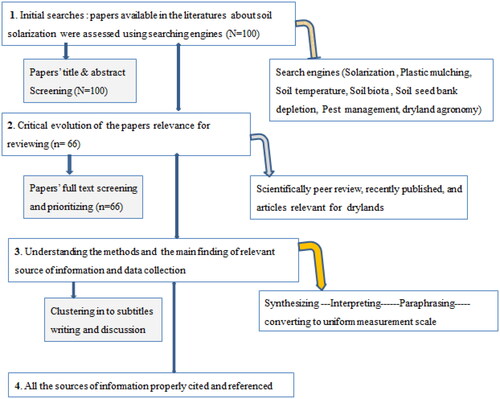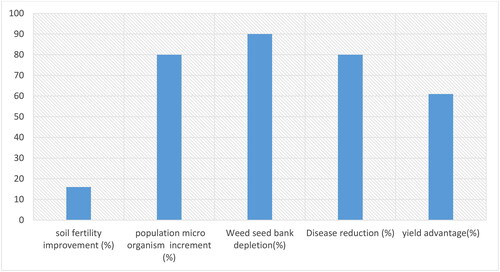Figures & data
Figure 1. Synthesize literature review methodology flow chart (Cumpston et al., Citation2023).

Table 1. Plastic color, durations (weeks), and depth (cm) of soil solarization on soil temperature scales (0C).
Figure 2. Role of soil solarization on improving the percentage of soil fertility, total population of soil microbiology and crop yields, and reducing diseases and weed seed bank depletion (Abd-Elgawad et al., Citation2019; Dwivedi and Dwivedi, 2020; Meena et al., Citation2019; Safdar et al., Citation2021).

Table 2. Effect of soil solarization on Soil pH, EC organic matter and carbon (%), and soil NPK contents in (mgkg−1).
Table 3. Soil solarization on population dynamics of soil microbiology (no.g-1 soils).
Table 5. Effect of soil solarization on numbers of pathogen population (g-1 of soil), disease infestation and management (%).
Table 4. Effect of soil solarization on weed density (m-2), biomass (gm-2) and soil seed bank depletion (%).
Table 6. Effect of soil solarization on crop yield (t.ha) and economic profitability (US$) over unsolarized plots.
